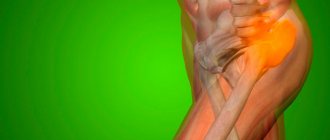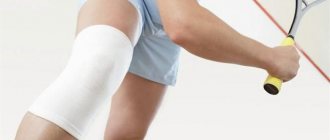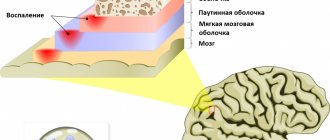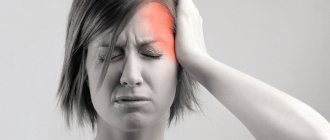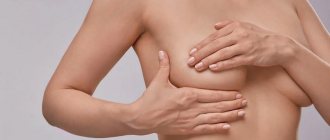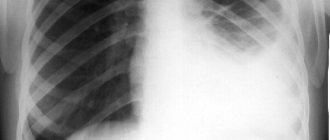general description
Pain in the pelvis on the right or left is often complemented by an inflammatory process, pinching of the sciatic nerve or its irritation. In such a situation, the aching pain often spreads to the leg, thigh and buttocks. It becomes more pronounced during physical activity and when performing certain loads.
Painful sensations appear from the thigh and tailbone, spread to the muscles of the buttock, to the back of the thigh and calves, and radiate to the foot, without moving to the phalanges of the fingers. Pain is felt throughout the entire limb. Most often, this unpleasant symptom affects only one lower limb. In some cases, sciatica occurs on both limbs.
When pain occurs, especially if it lasts for a long time, the general condition of the body suffers, and a person’s gait changes. He tries to reduce the load on the diseased limb by transferring it to the healthy one. This is how lameness occurs.
Vein diseases
Leg pain is accompanied by:
- Varicose veins;
- phlebitis and thrombophlebitis;
- postthrombophlebitic syndrome.
Varicose veins
This disease is widespread and is a very pressing problem in medicine and cosmetology.
Find out more about the promotion >>>
Phlebitis and thrombophlebitis
Phlebitis is inflammation of a vein. Thrombophlebitis is a complication of phlebitis or varicose veins of the lower extremities. With thrombophlebitis, a blood clot forms in the inflamed vein. Pain is a concern and swelling of the legs is possible.
Deep vein thrombosis is fraught with complications, the most dangerous of which are venous gangrene of the limb (with high blockage and blockage of all outflow pathways of venous blood) and pulmonary embolism. The risk of thromboembolism is highest in the presence of an unfixed - floating thrombus. The larger the detached fragment of the blood clot, the greater the likelihood of an unfavorable outcome, including death.
A common complication of deep vein thrombophlebitis is postthrombophlebitis syndrome.
Causes of pain not related to joints
There are many factors that provoke pain in the pelvis, which extends to the lower extremities. To carry out the correct therapy, it is necessary not only to establish a diagnosis, but also to determine the reason why it appeared. Provoking factors for the appearance of pain can be pathologies of the articular apparatus or internal organs, or there may be other reasons.
In the event that there are no degenerative-dystrophic changes in the joint apparatus, the following factors can cause pain:
- The period of bearing a child. Unpleasant symptoms in the pelvis and lower back are triggered by changes in the body, pressure from the uterus on the internal organs, and compression of the joints. Often women during this period of life suffer from aching pain that radiates to the limbs.
- Diseases of an inflammatory or infectious nature that affect soft tissues and nerve fibers. The pain is sharp or aching in nature.
- Obesity. In this case, the spine experiences increased stress, and unpleasant symptoms occur in the pelvis and lower back.
- Hypothermia. Against the background of hypothermia, diseases of the joint and bone apparatus often begin to develop.
- Tumor-like processes in the spinal column of a benign or malignant nature.
- Diseases of the muscular system.
- Diseases associated with metabolic disorders. These are diabetes mellitus, gout, rheumatism.
Pain in the lumbar or pelvic area, which radiates to the lower limb, can cause sciatica. This pathology is accompanied by pinching of the sciatic nerve. Sciatica can be caused by prolonged exposure to an uncomfortable position, constant sedentary work, or hypothermia. Spinal diseases can also provoke this problem.
Diagnosis of pain in the leg closer to the groin
Joint pain cannot be ignored. Any unpleasant sensations indicate a violation of the functionality of the body and pathology of the internal organs. Contact KDS Clinic. Experienced specialists will provide assistance at any time. The patient is sent for tests and a comprehensive examination of the body. With such symptoms, the patient should undergo an X-ray of the joints and ultrasound diagnostics. General tests will show details of the body's internal indicators. To get a more accurate result, it is worth doing magnetic resonance imaging. The procedure is prohibited for pregnant women, women during the lactation period and children under sixteen years of age. Consult your doctor before undergoing the examination.
Make an appointment with a specialist by number. In some cases, the patient is left in the hospital to monitor improvements in indicators. We suggest that you familiarize yourself with prices for all services on the official website of the medical institution.
Types of pain
Painful sensations while walking can vary in intensity and type. This is due to the provoking factor in the development of diseases, the individual pain threshold, and the stage of development of the disease.
Painful sensations can be severe or moderate. The nature of the pain is aching, sharp, stabbing, dull, pulling. When visiting a doctor, it is very important to establish the nature of this symptom; this will help to make a more accurate diagnosis and begin timely treatment.
The main types of unpleasant symptoms are:
- Acute pain. It is intense but short-lived. It is most pronounced in the pathologically changed area. In this case, the leg and buttock hurt slightly. Such pain is easier to cope with.
- Aching pain. In this case, the unpleasant sensations spread evenly throughout the entire limb, especially in those areas that are in close proximity to the damaged area. The pain can be aching and pulling, in this case diagnosis is difficult.
- Chronic pain. It is long lasting and is present over a long period. It is very difficult to get rid of it.
Prevention
To avoid diseases that cause pain in the hip joint, you must:
- adhere to healthy eating principles, monitor body weight;
- maintain moderate physical activity, walk regularly;
- avoid heavy loads associated with lifting and carrying heavy objects;
- protect joints from hypothermia;
- avoid injury.
Joint diseases and their characteristic symptoms
With the development of joint diseases, pain occurs that radiates to the lower limb.
Arthritis of the hip joint
This disease is typical for older people. The main symptom is aching pain in the pelvis. If arthritis develops in the bone apparatus, a person feels discomfort and unpleasant sensations. With the development of arthritis of the periarticular structures, sharp, cutting pain appears during walking. Localization - anterior thigh. Complemented by stiffness of movements. In this case, the use of hormonal drugs, non-steroidal anti-inflammatory drugs is required, followed by physiotherapy, massage, and manual therapy.
Coxarthrosis of the hip joint
This pathology begins to develop after the age of 45. At the initial stages of development, symptoms practically do not appear. This is the insidiousness of the disease, since it can be determined already at the stage of irreversible changes.
Initially, mild pain occurs in the pelvic area, which gradually spreads to the limbs while walking. As the disease progresses, intra-articular cartilaginous structures are destroyed, and pain radiates to the limb. The pathological process is complemented by compression and pinching of nerve endings and ligaments in the pelvis. The pain is constant and is accompanied by shooting pain in the groin and knee areas. In addition to conservative treatment of hip pain, physiotherapy is prescribed depending on the cause.
Bursitis of the hip joint
The hip bone is surrounded by a special cavity - the articular capsule. When it becomes inflamed, bursitis is diagnosed. There are two types of the disease - vertical and ischiogluteal bursitis. It is difficult for a person to lie on the side where the joint capsule is inflamed, as he experiences severe pain and discomfort. Treatment of bursitis involves the administration of glucocorticosteroids by injection. It is also necessary to limit physical activity during an acute pathological process.
Tendinitis
Most often, this pathological process develops in people who engage in heavy physical activity or in those who play professional sports. In this case, the ligaments are affected and the mobility of the articular apparatus is limited. A person experiences severe pain when trying to lean on the affected limb.
Osteomyelitis
The disease is characterized by damage to the long tubular bones of the limb. This is an infectious process that is accompanied by swelling, joint deformation, local hyperthermia, redness of the inflamed area and severe pain.
Causes
Among the factors that provoke the appearance of pelvic pain, we should first of all mention:
- infectious inflammatory process in the tissues of the joint capsule (arthritis);
- degenerative tissue changes, osteoarthritis;
- traumatic injury - dislocation or fracture of the femoral neck;
- aseptic necrosis affecting the head of the femur;
- inflammatory process in the tissues forming the joint capsule (bursitis);
- non-infectious inflammation caused by an autoimmune disease;
- tuberculosis process;
- pregnancy.
Pain in the pelvic bones is much less common in young patients than in older people. In the older age category (over 60 years), it is periodically or constantly present in 60-60% of patients, while children under 18 years of age suffer from it in barely 10% of cases.
Diagnosis of pathology
Painful sensations can occur in the presence of various diseases. It is not recommended to try to get rid of unpleasant symptoms on your own. It is very important to establish the correct diagnosis, and then undergo the prescribed treatment for hip joints in Moscow in a specialized clinic.
To determine the provoking factor in the development of unpleasant symptoms, doctors use various diagnostic methods. First, a visual inspection and palpation of the painful area is performed. The doctor also collects medical history data.
Based on patient complaints, diagnostic procedures are prescribed:
- Laboratory testing of blood and urine.
- Biochemical blood test.
- Radiography.
- Tests for rheumatoid factor.
- Proteinogram.
- CT scan.
- Magnetic resonance imaging.
- Determination of vascular patency.
- Ultrasonography.
Pelvic pain in pregnant women
There are several reasons why hip joints may hurt in women:
- in recent weeks - lack of calcium or vitamin D;
- increased production of the hormone relaxin, which promotes sprains;
- exacerbation of latent hip dysplasia or osteoarthritis;
- increased stress on the joint due to weight gain;
- old injury.
Women who have pelvic pain during pregnancy should be more attentive to their health, because this condition can lead to an exacerbation of even minor diseases.
Features of the treatment of pain of different types
Treatment methods are selected depending on the established diagnosis. To temporarily relieve pain, you can take a painkiller. It will only act for a short time. Since the cause is not eliminated, the unpleasant sensations return again.
Most often, for diseases of the articular system, doctors prescribe conservative therapy. Medications are prescribed - steroidal or non-steroidal anti-inflammatory drugs, vasodilators, chondroprotectors, vitamin complexes. Additionally, physiotherapeutic procedures are prescribed.
If the disease is at an advanced stage of development, conservative therapy may be ineffective. In such a situation, doctors consider the advisability of surgical intervention. For bursitis, removal of fluid from the periarticular bursa is indicated. For infectious diseases, in addition to basic therapy, antibacterial drugs are prescribed.
Myalgia, muscle pain
Myalgia, or muscle pain, is a symptomatic disease that is accompanied not only by discomfort in the muscles during movement, but by swelling of the arms or legs, and the appearance of muscle inflammation. In addition, with myalgia there is a violation of the permeability of muscle cell membranes.
Symptoms of myalgia vary and depend on the type of disease. Main types of myalgia:
- Fibromyalgia – accompanied by musculoskeletal pain, which manifests itself especially strongly when palpating the muscles;
- Myositis is an inflammation of skeletal muscles, which is accompanied by pain even with the simplest movements. Treatment of this type of disease is extremely necessary, as it can lead to disability;
- Polymyositis is a disease characterized by inflammation of the striated muscles and skin. Polymyositis is often accompanied by malignant tumors.
Treatment of pain in the hip joints
Therapy is prescribed by a doctor after a pre-established diagnosis. For the drug treatment of hip joint diseases, the following scheme is used:
- Non-steroidal anti-inflammatory drugs. Their main goal is to relieve an acute inflammatory process, reduce the severity of pain, and eliminate swelling. Such medications include Indomethacin, Ibuprofen, Dicrofenac.
- Muscle relaxants. Designed to eliminate muscle spasms and relieve pinched sciatic nerves. Such drugs include Movalis, Tolperil, Meloxicam.
- Glucocorticosteroids. Designed to relieve inflammation and relieve pain. This is Prednisolone, Dexamethasone.
- Chondroprotectors. The task of these drugs is to restore damaged cartilage structures. These are Artra, Chondroxil, Chondroitin Glucosamine, Theraflex.
- Vitamin complexes – Milgamma, Neurobeks.
If conservative treatment is ineffective, surgery may be used. At an advanced stage of diseases of the articular apparatus of the hip area, joint replacement is performed, which consists of completely replacing the damaged part of the hip. After such treatment, rehabilitation is carried out. Its result is relief from pain and unpleasant symptoms that arise during the development of degenerative diseases.
With proper and timely treatment, diseases of the hip joint that are accompanied by severe pain can be cured.
Pelvic pain in men
The only pathology of the pelvic joint that affects only men is Perthes disease. This is a hereditary disease that consists of deformation of the head of the femur: it becomes flat rather than round. When walking, the patient has pain in the hip joint on the left side, if the pathology is localized on the left, or on the right side, if the head is deformed on the right.
A disease that is more common in men is tendonitis, or an inflammatory process that affects the tendons. This is a disease of athletes and people forced to perform heavy physical work for a long time - loaders, masons, heavy weights, etc. Pain appears during heavy exertion, during active movements. With moderate and light loads, as a rule, there is no pain.
The next typically “male” disease is necrosis of the femoral head, and about a third of patients become ill at a young age - up to 30 years. The disease goes through several stages, and already at the very beginning the patient has pain in the hip joint on the right side (or on the left), and the pain is felt in the groin area, less often it radiates to the hip, knee or lower back. If left untreated, lameness appears over time and disability develops.
How to relieve severe pain
If the pain appears as a result of severe physical strain, you can relieve the discomfort at home:
- taking a warm bath (you can add herbal decoctions or essential oils of chamomile, calendula, oak bark, linden blossom or mint to the water);
- having a light relaxing massage using creams or essential oils;
- making a cold compress (pieces of ice wrapped in cloth are applied to the sore spot).
You can also lie on your back with your legs elevated, which will help restore blood circulation in your legs.
How can an orthopedic seat cushion help?
If pain of nervous etiology occurs, doctors recommend using an orthopedic pillow under the lower back. What is its effect? First of all, this is:
- Correct anatomical support of the spinal column and lumbar region;
- Relieving stress and tension from the spine;
- Supporting correct posture;
- Establishing blood circulation;
- Relieves general fatigue throughout the day.
Medtekhnika Orthosalon offers a variety of pillow models that effectively eliminate nagging pain in the lower back and legs. We cooperate only with trusted brands, of which we are 100% confident.
